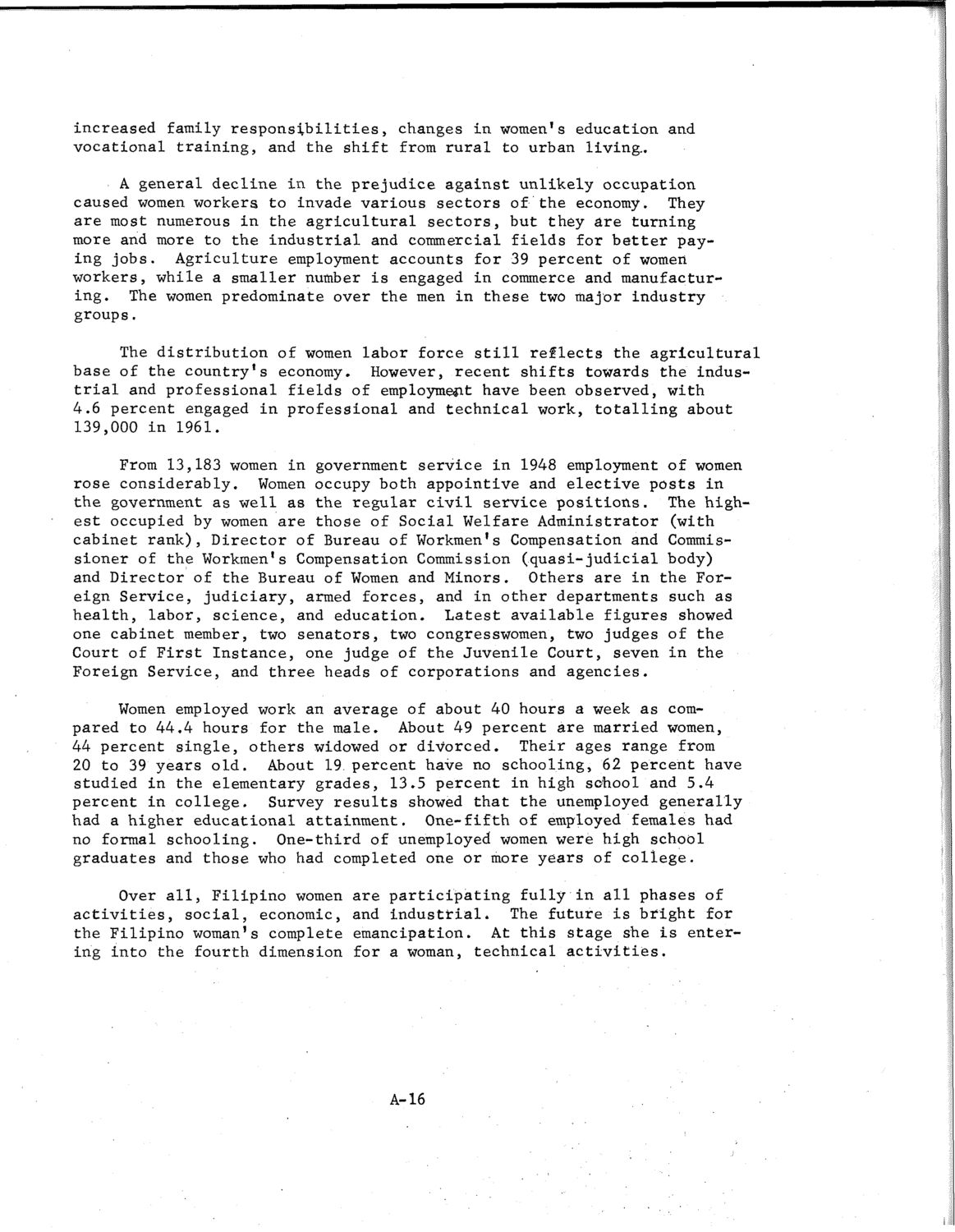| |
| |
Caption: SWE - Proceedings of the First International Conference of Women Engineers and Scientists
This is a reduced-resolution page image for fast online browsing.

EXTRACTED TEXT FROM PAGE:
increased family responsibilities, changes in women's education and vocational training, and the shift from rural to urban living.. A general decline in the prejudice against unlikely occupation caused women workers to invade various sectors of the economy. They are most numerous in the agricultural sectors, but they are turning more and more to the industrial and commercial fields for better paying jobs. Agriculture employment accounts for 39 percent of women workers, while a smaller number is engaged in commerce and manufacturing. The women predominate over the men in these two major industry groups. The distribution of women labor force still reflects the agricultural base of the country's economy. However, recent shifts towards the industrial and professional fields of employment have been observed, with 4.6 percent engaged in professional and technical work, totalling about 139,000 in 1961. From 13,183 women in government service in 1948 employment of women rose considerably. Women occupy both appointive and elective posts in the government as well as the regular civil service positions. The highest occupied by women are those of Social Welfare Administrator (with cabinet rank), Director of Bureau of Workmen's Compensation and Commissioner of the Workmen's Compensation Commission (quasi-judicial body) and Director of the Bureau of Women and Minors. Others are in the Foreign Service, judiciary, armed forces, and in other departments such as health, labor, science, and education. Latest available figures showed one cabinet member, two senators, two congresswomen, two judges of the Court of First Instance, one judge of the Juvenile Court, seven in the Foreign Service, and three heads of corporations and agencies. Women employed work an average of about 40 hours a week as compared to 44.4 hours for the male. About 49 percent are married women, 44 percent single, others widowed or divorced. Their ages range from 20 to 39 years old. About 19 percent have no schooling, 62 percent have studied in the elementary grades, 13.5 percent in high school and 5.4 percent in college. Survey results showed that the unemployed generally had a higher educational attainment. One-fifth of employed females had no formal schooling. One-third of unemployed women were high school graduates and those who had completed one or more years of college. Over all, Filipino women activities, social, economic, the Filipino woman's complete ing into the fourth dimension are participating fully in all phases of and industrial. The future is bright for emancipation. At this stage she is enterfor a woman, technical activities. A-16
| |